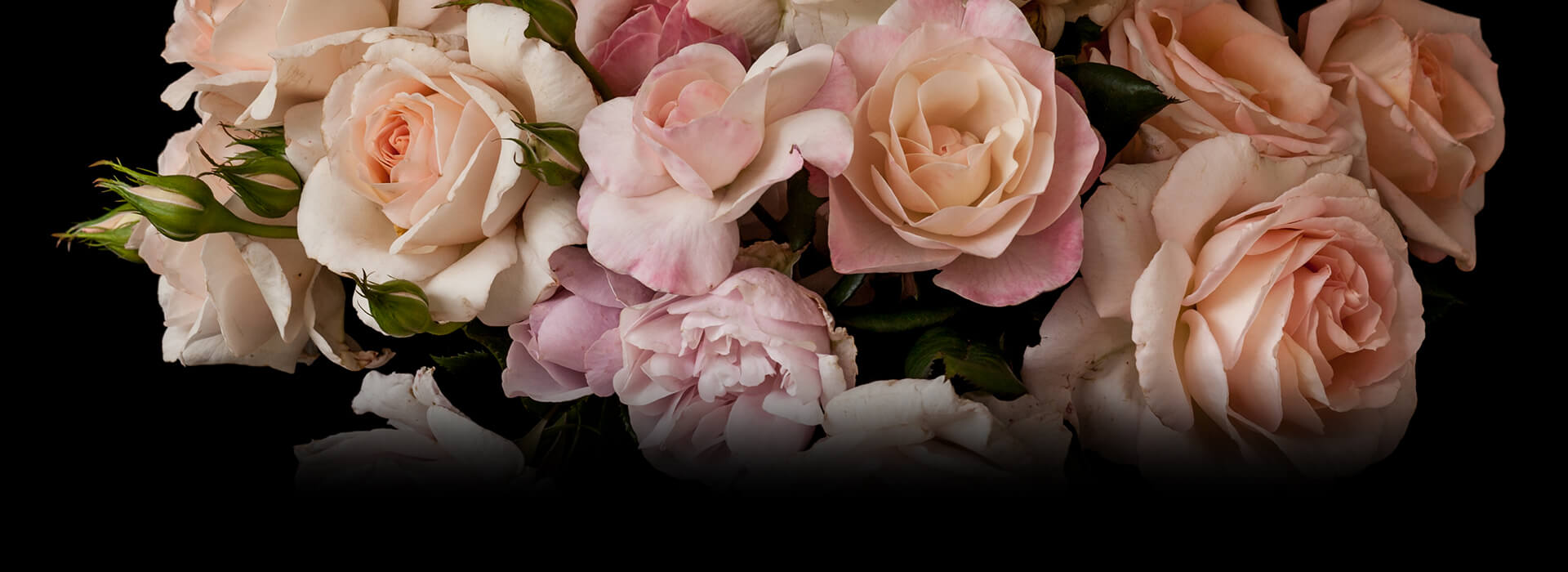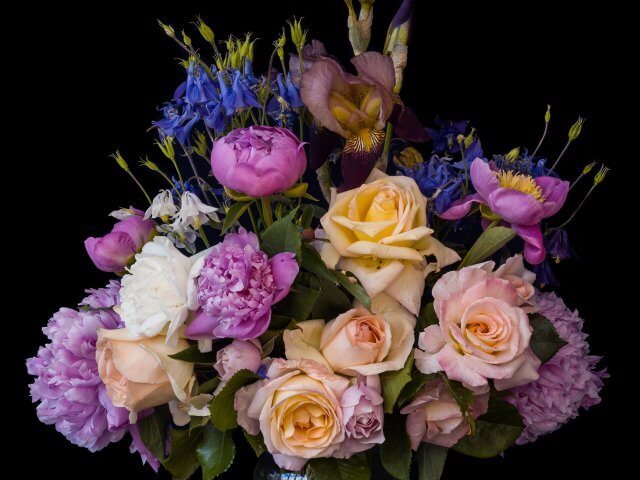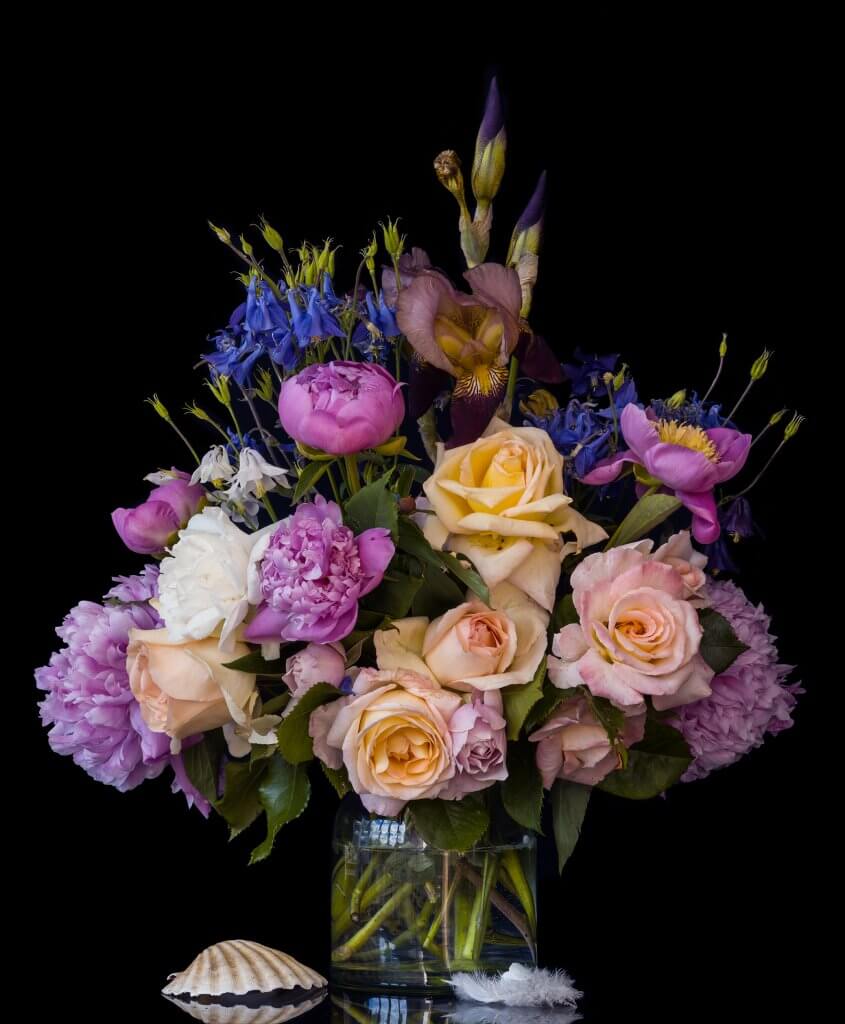Pilgrim
There are often moments in life when we become pilgrims either physically or metaphorically. We take time exploring new ideas or directions in our lives. These pilgrimages can be life changing.
This piece is my tribute to the pilgrim in whatever form their journey takes.
The flowers come from my garden in East Suffolk (which in itself is part of my journey). They are gathered together to form a triangular arrangement with the Iris at its head. This flower in various forms has appeared in art since the fifteenth century, becoming very common, in various different species and hybrids, from the seventeenth century. It is represented as the fleur-di-lis in heraldry and is thought to have been symbolic of Christ or divine rule and a symbol of the Virgin as the Heavenly Queen, since the middle ages.
Either side of the Iris is Columbine (Acquilegia). This flower’s five petals form into the shape of a dove which is a symbol of the Holy Spirit and of peace. The Columbine’s leaf also divides into three so it is also symbolic of the Trinity.
The rest of the arrangement comprises peonies and roses. Peonies speak of lost abundance or bygone beauty and because they flower around Whitsun (Pentecost) which is 8 June this year, they are also associated with the Holy Ghost and their triple leaves with the Trinity.
The rose is the most common flower depicted in paintings since the Ancient Greeks, symbolising every kind of love. They still represent devotion today, in all its forms. Often shown with or without prickles, the rose references the Virgin Mary. Some of those writing the books of the studies on emblems, state that its most important property, above the beauty of the bloom, is the scent which lingers, like a true love.
White birds’ feathers speak of distant travels and the broken egg could be interpreted as a new life beginning, perhaps because of the pilgrimage undertaken.
The scallop shell has long been associated with pilgrimage, particularly with the Camino de Santiago. It is a metaphor for pilgrimage which epitomises the idea that the journey is more important than the destination.
Whether you have undertaken a traditional pilgrimage or one where you spent time analysing your life and where it was taking you, this piece is dedicated to you. My journey has been one of numerous directions and false hopes. My last major change in direction occurred after being treated for two different cancers a few months apart. That kind of thing really raises questions as to what one wants out of life. So, here I am, still exploring, still creating. Who knows where the next turn will take me.



